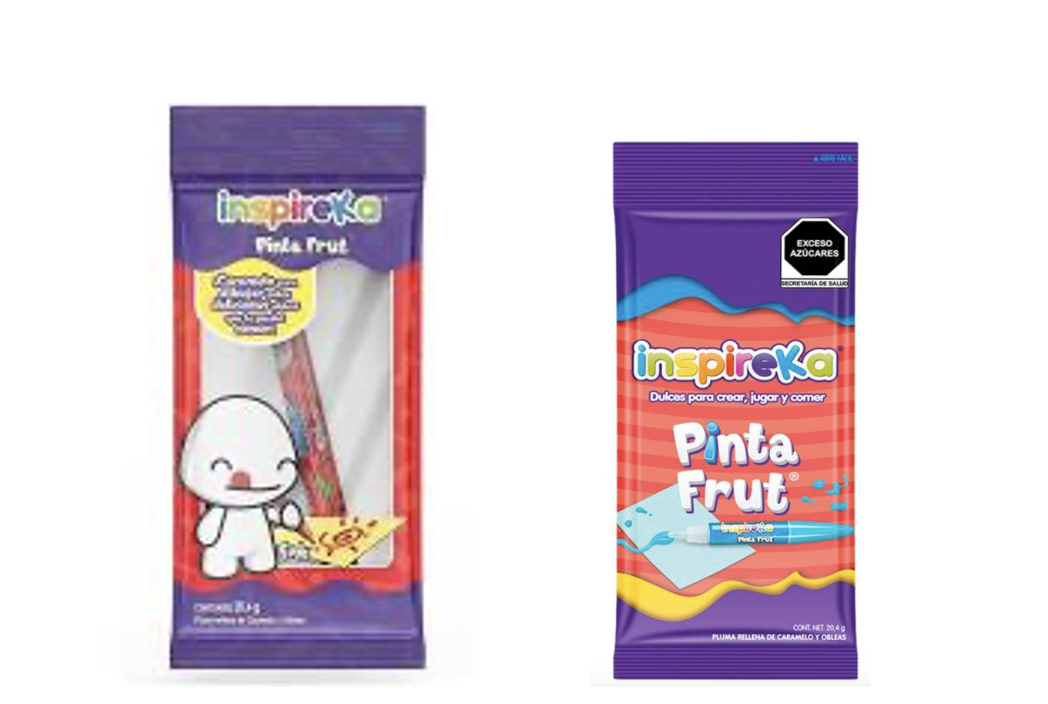How to manage losing powerful brand properties?
Distinctive brand properties (e.g. logos, colors, slogans, mascots) are important to stand out in today’s fast paced and cluttered markets. Building strong brand properties takes years and millions of dollars. How to respond when your most powerful properties become illegal? This is the challenge many famous food brands in Mexico are facing today. [Post by Bety Martinez, Partner based in Mexico City].
Already, products exceeding health-related thresholds (free sugars, saturated fat, sodium, transfats) must carry warning icons (see below). From April 2021, any product with one or more of these warnings “will not be able to showcase in packaging characters, cartoons, sponsors, mascots or celebrities.” (1)

The intention of the new guidelines is fantastic. Mexico holds the highest rate of obesity in the world, with 1/3 of children overweight or obese. But as a result, brands have a huge marketing challenge on their hands. Today, c. 85% of processed packaged products must show at least one of these icons. This means saying goodbye to some of the most iconic, well known characters built up over 90 years or more!
Below I suggest three main ways brands can respond to this challenge.

1. Upgrade the core
The optimum solution, albeit not easy to do, is to follow the government’s lead to reduce ‘the nasties’ in products. This would be a win-win. Consumers get healthier products and brands keep their characters. Many big companies claim to have already reformulated a large part of their portfolio. Bimbo are leading the way (82%) followed by Pepsico (70%) and Nestlé (40%). However, it’s unclear if these changes will be enough to meet the stricter regulations coming out. And the challenge is to maintain taste appeal and not lose all your customers overnight.
2.Extend the core
If reformulation requires too much of a ‘trade-off’ in taste, range extension is an alternative way to keep the brand character. If appealing enough, the new extension could even end up becoming the ‘hero product’ in the range. This has happened with Coca-Cola. Sugar-free and low sugar offerings already make up 55% of sales, with the brand aiming to increase this to 70% by 2024. (2)
3.Manage design migration
If none of the above options are available, smart pack design becomes vital, to leverage the non-character related visual properties. You need to ‘treasure and measure’ your visual assets, using a method such as the Iconic Asset Tracking (IcAT) we use on brandgym projects. This taps into the intuitive “system 1” thinking people use when making decisions. You can then highlight, protect and enhance the elements with strong ‘memory structure’.
In the example below, the main purple colour, pink highlighting and the rainbow-like logo are key visual equities that have been use to manage the migration of the design.

In conclusion, the best companies will turn this problem into an opportunity to revitalize their brands to meet the needs for healthier products and find creative ways to continue building brand properties. That way, mascots that are part of happy childhood memories of the past will live on, whilst encouraging responsible consumption for future generations.
Sources:
- El Financiero.com: Menos sodio y menos azúcar: así reformulan las marcas sus productos tras nuevo etiquetado. https://www.elfinanciero.com.mx/empresas/el-nuevo-etiquetado-de-advertencia-obliga-a-reformular-productos
- Eleconomista.com.mx Conoce los productos que no tendrán sellos. https://www.eleconomista.com.mx/empresas/Conoce-los-productos-que-no-tendran-sellos-20201007-0041.html
- Todo lo que debes saber sobre el nuevo etiquetado de advertencia. https://elpoderdelconsumidor.org/2020/05/todo-lo-que-debes-saber-sobre-el-nuevo-etiquetado-de-advertencia/


